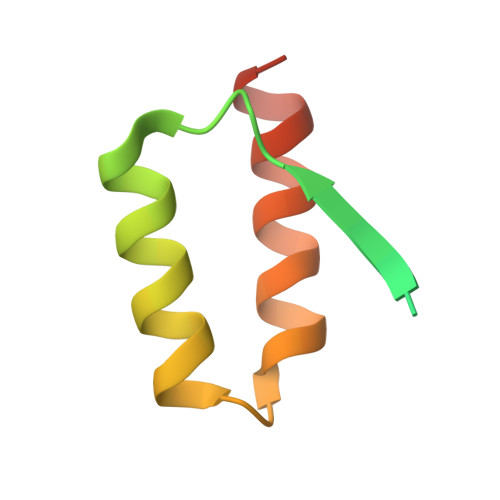Stabilization of a beta-hairpin in monomeric Alzheimer's amyloid-beta peptide inhibits amyloid formation.
Hoyer, W., Gronwall, C., Jonsson, A., Stahl, S., Hard, T.(2008) Proc Natl Acad Sci U S A 105: 5099-5104
- PubMed: 18375754
- DOI: https://doi.org/10.1073/pnas.0711731105
- Primary Citation of Related Structures:
2OTK - PubMed Abstract:
According to the amyloid hypothesis, the pathogenesis of Alzheimer's disease is triggered by the oligomerization and aggregation of the amyloid-beta (Abeta) peptide into protein plaques. Formation of the potentially toxic oligomeric and fibrillar Abeta assemblies is accompanied by a conformational change toward a high content of beta-structure. Here, we report the solution structure of Abeta(1-40) in complex with the phage-display selected affibody protein Z(Abeta3), a binding protein of nanomolar affinity. Bound Abeta(1-40) features a beta-hairpin comprising residues 17-36, providing the first high-resolution structure of Abeta in beta conformation. The positions of the secondary structure elements strongly resemble those observed for fibrillar Abeta. Z(Abeta3) stabilizes the beta-sheet by extending it intermolecularly and by burying both of the mostly nonpolar faces of the Abeta hairpin within a large hydrophobic tunnel-like cavity. Consequently, Z(Abeta3) acts as a stoichiometric inhibitor of Abeta fibrillation. The selected Abeta conformation allows us to suggest a structural mechanism for amyloid formation based on soluble oligomeric hairpin intermediates.
Organizational Affiliation:
Department of Medical Biochemistry and Swedish Nuclear Magnetic Resonance Center, University of Gothenburg, Box 440, SE-405 30 Göteborg, Sweden.















